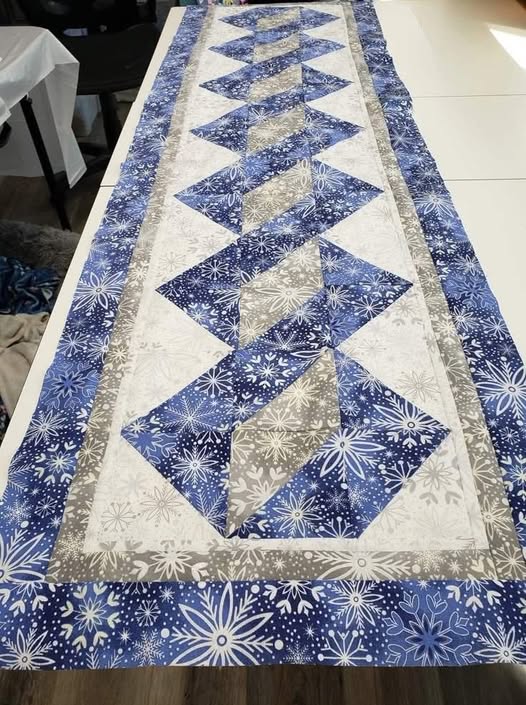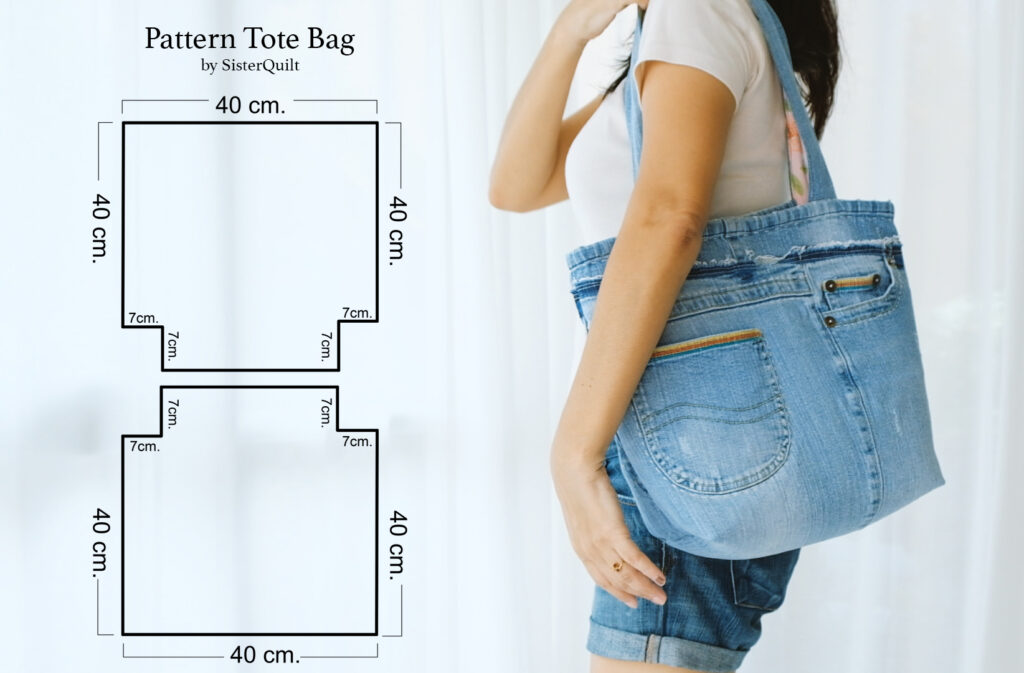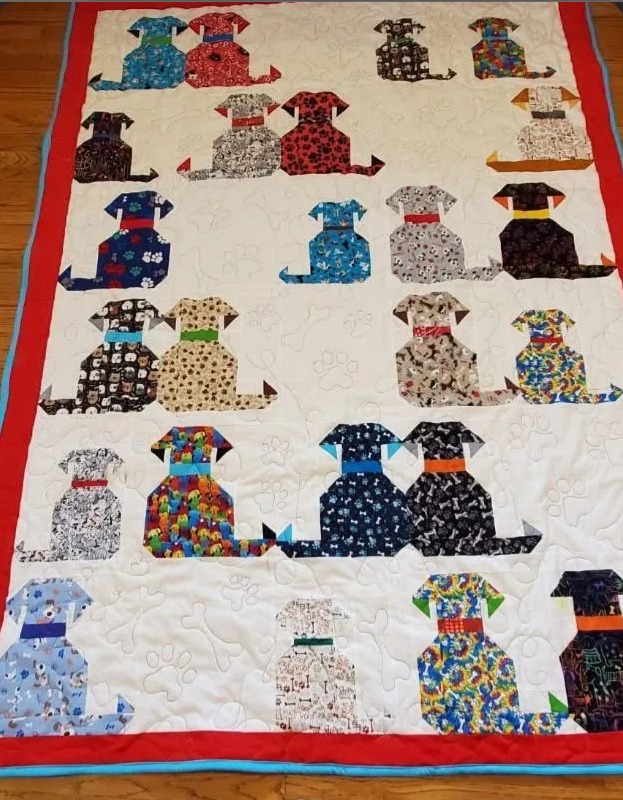The Pole Twist Table Runner Quilt Pattern is a delightful and creative quilting design that perfectly blends elegance, color harmony, and a touch of playful geometry. Whether you’re a seasoned quilter or a beginner eager to explore new ideas, this pattern provides the perfect opportunity to practice piecing, color coordination, and layout balance.
Creating your own Pole Twist Table Runner Quilt Pattern allows you to experiment with fabrics, hues, and arrangements that reflect your personal style. You can choose subtle pastels for a cozy farmhouse look, or go bold with bright tones to energize your dining table.
This pattern’s versatility is another reason it’s adored by quilters. You can adjust the length and width to suit your table or even modify the color scheme for different seasons and occasions. Imagine a Pole Twist Table Runner Quilt Pattern in warm reds and golds for Christmas, or soft blues and whites for spring.

Understanding the Pole Twist Table Runner Quilt Pattern
The Pole Twist Table Runner Quilt Pattern is characterized by its twisting vertical blocks that create a mesmerizing motion effect across the fabric. Each section of the runner is composed of alternating strips or columns that seem to spiral around a central axis, giving the illusion of movement. This “twist” design adds depth and sophistication without overly complicating the assembly process. It’s an excellent project for practicing straight-line piecing and color contrast.
When choosing fabrics for this quilt pattern, balance is everything. You’ll want to select fabrics that complement one another while still providing enough contrast to make the twist visible. For example, pairing light neutrals with deep jewel tones enhances the rotational illusion. The fabric choice can also reflect the season or theme you want — from rustic autumn tones to modern monochrome palettes.
To create the Pole Twist Table Runner Quilt Pattern, you’ll start by cutting fabric strips of consistent width and length. The beauty of this pattern lies in its symmetry; even a small shift in alignment can dramatically change the overall effect. Careful measuring, pressing, and pinning are key steps to ensure your finished runner lays flat and displays a clean, crisp twist.
One of the reasons quilters love this pattern is its simplicity in construction. Even though it looks advanced, the actual technique relies on repeating basic steps. Once you understand the pattern’s structure, assembling multiple runners becomes faster and more intuitive. It’s a rewarding project that builds both skill and confidence.
Another advantage is the opportunity for customization. You can add borders, binding accents, or even quilted motifs that emphasize the swirling motion. Stitching curved or wavy lines across the surface enhances the sense of rotation, while straight quilting lines keep it modern and minimalist.
Finally, the Pole Twist Table Runner Quilt Pattern offers a wonderful balance between traditional quilting art and contemporary design. Its timeless appeal ensures it fits in both classic and modern interiors, making it a versatile piece that can be cherished for years.
Materials and Preparation
Before beginning your Pole Twist Table Runner Quilt Pattern, gather all your essential supplies. Having everything ready will make your quilting process smoother and more enjoyable. You’ll need quilting cotton in two or more contrasting colors, a rotary cutter, cutting mat, quilting ruler, sewing machine, and thread that complements your fabric. You’ll also need batting and backing fabric to give your table runner a finished, padded texture.
The first step is to cut your fabrics accurately. The precision of your cuts will directly affect how well the twists align later. Use a rotary cutter with a sharp blade to ensure clean, even edges. It’s recommended to starch your fabric lightly before cutting to prevent stretching or distortion.
Once your strips are ready, it’s time to arrange them in a layout that creates the twist effect. You can lay out the pieces on a design wall or large flat surface to visualize how the colors will flow. Don’t be afraid to experiment — sometimes unexpected combinations lead to the most beautiful results.
Next, sew your fabric strips together with consistent seam allowances, typically ¼ inch. Press each seam flat as you go; pressing rather than ironing ensures the seams stay crisp without warping the fabric. The key to achieving that seamless twist is in maintaining straight, even stitching.
Adding batting and backing comes next. Cut both layers slightly larger than the top to allow for adjustments. Pin the layers together carefully, ensuring they remain smooth and flat. Basting spray can help keep them aligned while quilting.
Finally, trim the edges and attach the binding. This last step frames your design and adds a professional finish. Choose a binding color that complements your main fabrics — a dark edge creates contrast, while a matching tone offers subtle elegance.
Tips for Perfecting the Pole Twist Design
Perfecting your Pole Twist Table Runner Quilt Pattern is all about precision and practice. The more attention you pay to details, the better your finished piece will look. Start by ensuring your cutting tools are sharp; dull blades can lead to uneven edges that make piecing difficult. Always double-check measurements before cutting or stitching.
Color selection is another important factor. When the contrast between fabrics is too low, the twist may not stand out. To test visibility, step back a few feet from your layout and see if the twist effect remains clear. High contrast fabrics — like navy and cream, or emerald and gold — tend to enhance the motion effect beautifully.
If you’re new to quilting, practice on small sample blocks first. This helps you understand how the pieces come together before committing to a full table runner. Once you’re comfortable, you can easily scale the project up.
Pressing is an underrated skill in quilting. Always press seams in the direction that reduces bulk and keeps the surface smooth. For a more professional look, press seams open when possible — it helps the quilt top lie flatter.
Creative Variations and Design Ideas
One of the joys of the Pole Twist Table Runner Quilt Pattern is how adaptable it is to different creative interpretations. You can play with shapes, colors, and layouts to design something uniquely yours. For instance, instead of uniform strips, try mixing widths for a more dynamic look. Thicker and thinner poles create a modern, asymmetric twist that catches the eye.
Seasonal variations are another fun option. For spring, choose floral prints and soft pastels; for fall, go with earthy tones like burnt orange, olive, and brown. Winter themes look stunning in deep blues and silvers, while summer designs pop with bright yellows and turquoise.
If you want a bolder statement, try adding appliqué accents or embroidered details between the twists. These small embellishments can personalize your runner and make it one-of-a-kind. Metallic threads also add a touch of sparkle that highlights the twist lines beautifully.
Another way to innovate is by playing with the orientation of your twists. Instead of running them vertically, try a diagonal layout. This subtle shift changes the visual flow and adds depth to your table setup.
You can even transform the Pole Twist Table Runner Quilt Pattern into other quilting projects. Use the same design to make placemats, pillow covers, or wall hangings. The possibilities are endless when you understand the fundamentals of the twist technique.
FAQ About the Pole Twist Table Runner Quilt Pattern
1. Is the Pole Twist Table Runner Quilt Pattern suitable for beginners?
Yes! This pattern is ideal for beginners. Although it looks complex, the construction relies on simple straight-line piecing and basic quilting techniques.
2. How much fabric do I need for a standard table runner?
Typically, you’ll need about half a yard of each of your two main fabrics, plus additional material for backing and binding. Adjust according to the desired size.
3. What’s the best quilting stitch for this pattern?
Straight-line quilting works beautifully with this design. It highlights the geometric twist while keeping the look clean and modern.
4. Can I use scraps to make a Pole Twist Table Runner?
Absolutely! This pattern is a great way to use up fabric scraps. Just ensure your colors contrast enough to show the twisting effect clearly.
Conclusion
The Pole Twist Table Runner Quilt Pattern combines artistry, precision, and creativity into one beautiful project. It’s a pattern that not only enhances your quilting skills but also transforms your table into a stunning visual display. From color choices to final stitching, every step allows you to express your unique style and craftsmanship.



